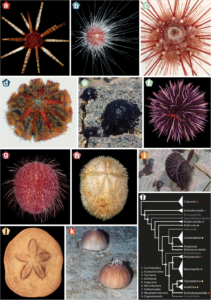
BMC International Health and Human Rights: Celebrating Human Rights Day
Human Rights Day is held on the 10th December, the date that the United Nations General Assembly adopted the Universal Declaration of Human Rights. To mark this occasion, Professor Siroos Mirzaei, an Associate Editor for BMC International Health and Human rights and Head of the Department of Nuclear Medicine of the Wilhelminen Hospital in Vienna, with Professor Thomas Wenzel, an Associate Professor from the Medical University of Vienna, were invited to write a blog post on the role that physicians play in upholding human rights and the dangers associated with this.

The authors explain that physicians are often faced with a variety of different ethical and human right issues. Examples include being requested to violate ethical standards in so called “dual obligations” situations, such as being involved in the planning and observation of torturing prisoners. Physicians can also find themselves at serious risk for upholding legal and ethical standards. Mirzaei and Wenzel then conclude the blog post by discussing the barrage of new ethical challenges that physicals may face, linked, for example, to medical technology or health related aspects of conflicts.
A new article, published as part of the ongoing Health Services Research for Opioid Use Disorders thematic series in BMC Health Services Research, investigates different opioid treatment policies in the USA and how these variations may affect opioid-related hospital readmissions in different states
Such policies include, for example, Good Samaritan laws, the availability of naloxone to reverse the effects of an overdose or the provision of medication-assisted treatment for opioid dependence. Blanchard et al conducted a study to assess whether such state opioid treatment policies had an effect on 90-day opioid-related hospital readmissions.
Differences in index hospitalization rates suggest that states with opioid treatment policies had a higher level of need for opioid-related intervention; this may be a factor in the higher rates of hospital readmission in these states. This, in turn, also suggests that more research is needed to understand what various opioid treatment policies can be most effective in reducing hospital readmission rates.
Chemotherapy-induced peripheral neuropathy (CIPN) is a progressive condition experienced by up to 40% of cancer patients undergoing chemotherapy. Symptoms include numbness, tingling and sensitivity to cold in the hands and feet and sometimes in the arms and legs. It can cause sufferers to lose function of the affected limbs. Diagnosing and treating CIPN quickly may prevent this loss of physical function.
Chemotherapy-induced peripheral neuropathy (CIPN) is a progressive condition experienced by up to 40% of cancer patients undergoing chemotherapy.
Knoerl et al recently published the results of a trial whereby self-reported physical function in cancer patients undergoing neurotoxic chemotherapy (chemotherapy known to cause CIPN) is assessed via a newly developed Electronic Symptom Assessment-Cancer (ESRA-C) intervention. The article reports that the patients experienced significantly less reduction in physical functioning when reporting their symptoms in this way.
Studies have suggested that caregivers can be vulnerable to psychological distress (for example, depression), particularly women. An article has recently been published in BMC Women’s Health that investigates the relationship between caregiving (proving unpaid care to someone who has physical, psychological or developmental needs) and depression amongst Baby Boomer women, using surveys distributed to women from nineteen different countries.
Baby Boomer women living in countries where a higher proportion of their peers are expected to be in managerial/professional employment and living in countries where women are often in vulnerable employment were found to be at greater risk of displaying symptoms of depression
The term “Baby Boomer” refers to people born between 1946 and 1964. This group of people benefited from the global revival after World War II, with many becoming more highly educated than the previous generation and therefore more likely to be employed in professional and managerial occupations. Baby Boomer women living in countries where a higher proportion of their peers are expected to be in managerial/professional employment and living in countries where women are often in vulnerable employment were found to be at greater risk of displaying symptoms of depression. These findings suggest that the risk of depression amongst Baby Boomer women in a caregiving role is dependent in some degree upon social context and structure and that promoting mental health for this group should therefore be tailored to their situation.
BMC Energy: Thematic series on Advanced Biofuels for CO2 Mitigation
BMC Energy is inviting submissions to the newly launched thematic series on “Advanced Biofuels for CO2 Mitigation,” covering topics from strain development and cultivation to biorefineries of microalgae for biofuels.
BMC Evolutionary Biology: Image of the month

This image is taken from an article by Koch et al on the sea urchin tree of life and shows the morphological and taxonomic diversity of echinoids included in this study.
Comments